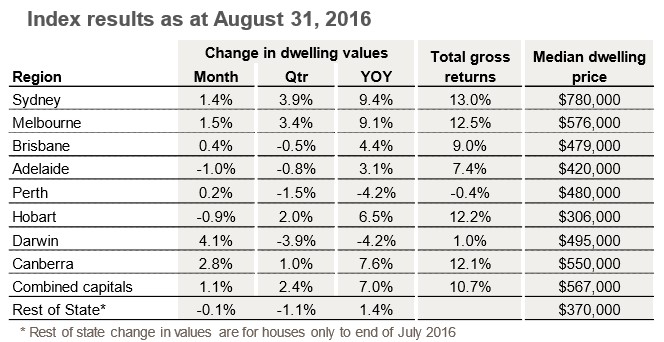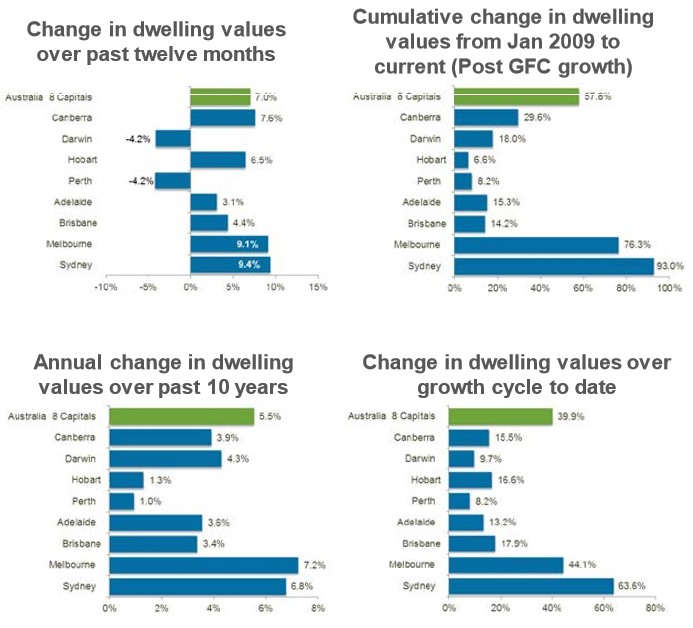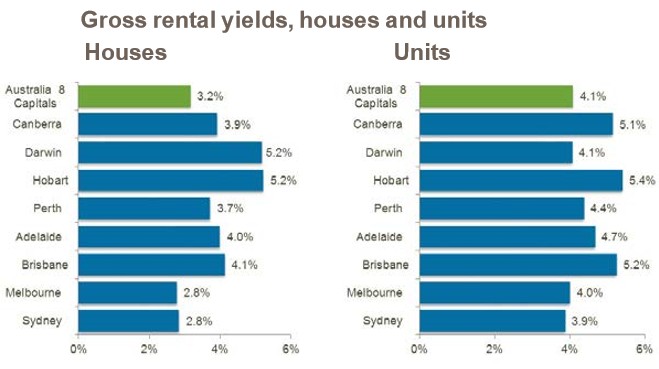Following on from yesterday’s post on CoreLogic’s daily dwelling values index results for August, CoreLogic has released its full results, which also cover the smaller capitals and regional areas (see next table).

As shown above, the smaller capitals and the regions had a mixed month in August, with Canberra (+2.8%) and Darwin (+4.1%) recording value rises, but Hobart (-0.9%) and Rest of State (-0.1%) recording falls.
Below are the key charts summarising the situation across the markets, with Sydney and Melbourne dominating:

The combination of falling rents and strong capital appreciation has compressed rental yields even further, with yields hitting another record low:

According to Tim Lawless:
Rental markets continued to run soft, with capital city rents falling a further -1.1% over the past three months to be -0.5% lower over the year. The weakest rental conditions are being experienced in Darwin and Perth, where dwelling rents fell by -9.4% and -14.1% respectively over the past twelve months.
Most of the capitals recorded rental falls over the year, however rents have shown some subtle growth in Melbourne, Canberra and Hobart. The gross rental yield profile in Sydney and Melbourne has once again pushed to a new record low in August. Sydney and Melbourne have each recorded the lowest gross rental yields across the capitals for houses at 2.8%, both of which are record lows for the cities. Gross rental yields on units tend to be higher compared with houses, however the gross yield for attached housing product is also at a record low, averaging 4.1% across the capital cities and ranging from 3.9% in Sydney to 5.4% in Hobart.
Meanwhile, price growth is strongest among entry-level homes, making it even more difficult for would-be first home buyers to enter the market:
“Looking at housing market performance across the broader value segments over the past 12 months, the most affordable suburbs have recorded the greatest value rises, while the most expensive suburbs have seen a more moderate rate of growth,” he said.
Based on the CoreLogic Stratified Hedonic Index, the most affordable quartile of capital city suburbs has recorded a value rise of 10% over the past year, compared to 7.4% growth across the broad middle of the market and a 6.2% gain across the most expensive quartile.
The full report can be downloaded here.

